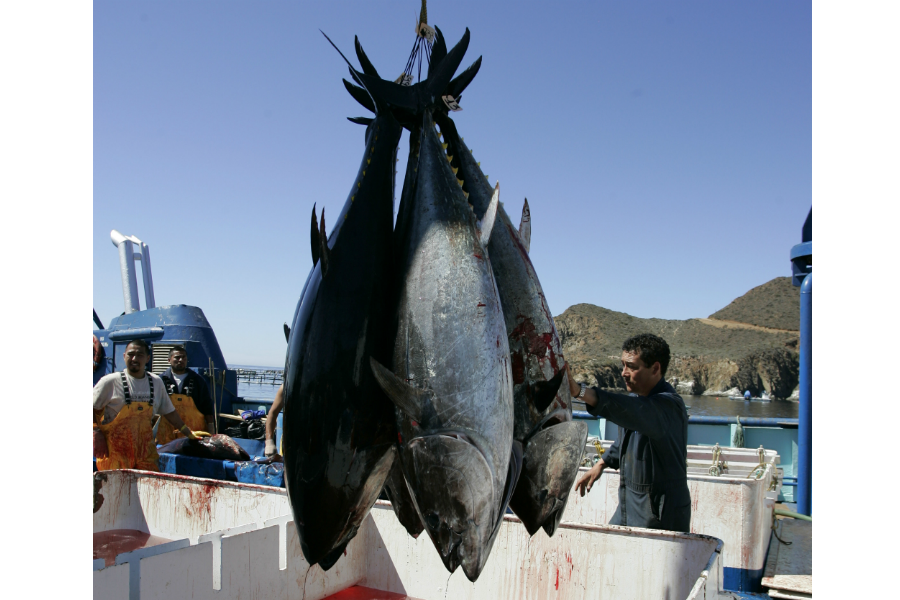Are humans causing a sixth mass extinction in the oceans?
Loading...
While global warming and ocean acidification driven by pollution pose a real threat to sea creatures, climate change is not the primary driver threatening to render large ocean animals extinct, according to a report published Wednesday in the journal Science.
Humans are threatening large sea creatures primarily by hunting and fishing them, the researchers found.
Stanford Jasper Ridge Biological Preserve executive director Anthony Barnosky, who was not involved in the study, said its findings reflect a phenomenon experienced by ancient terrestrial ecosystems.
“These losses in the ocean are paralleling what humans did to land animals some 50,000 to 10,000 years ago, when we wiped out around half of the big-bodied mammal species on Earth, like mammoths, mastodons, saber-tooth cats and the like,” Dr. Barnosky told The Washington Post's Chris Mooney.
The heightened threat to large marine genera is a recent phenomenon, reversing a 500 million-year pattern. The researchers made this discovery by comparing traits of nearly 2,500 extinct marine vertebrates and mollusks alongside others currently in danger of extinction. They found that fossil records show smaller marine animals were a little more likely than large ones to be killed off during five previous mass extinction events – the most recent of which was associated with an asteroid strike some 65 million years ago.
“What to us was surprising was that we did not see a similar kind of pattern in any of the previous mass extinction events that we studied,” said Jonathan Payne, a Stanford University geoscientist who served as the study’s lead author.
“This pattern has not happened before in the half-billion years of the animal fossil record,” Dr. Payne added.
The study shows that a sixth mass extinction, which may already be underway, could kill off larger-bodied animals while leaving smaller ones behind. That could have a dire long-term impact.
“The preferential removal of the largest animals from the modern oceans, unprecedented in the history of animal life, may disrupt ecosystems for millions of years even at levels of taxonomic loss far below those of previous mass extinctions,” the researchers wrote.
Duke University conservation ecology professor Stuart Pimm, who was not involved in the study, said this news should serve as a wake-up call for humans to drastically alter the way they manage the oceans.
“A paper like this is a warning of what will happen if we don’t get our act together,” Dr. Pimm told the Los Angeles Times. “We have brought gray whales back from the brink of extinction and blue whales are coming back too.”
Most whaling has been banned since the 1980s, and US President Barack Obama expanded a protected area off Hawaii last month to ban commercial fishing in a 582,500-square-mile portion of the Pacific Ocean.
Stephen Palumbi, a Stanford University research who co-authored a prior study on the topic, told The New York Times last year that limiting industrialization of the oceans may be necessary to give threatened animals time and space to recover.
“I fervently believe that our best partner in saving the ocean is the ocean itself,” Dr. Palumbi said, noting that cutting back on carbon emissions will also be necessary to slow extinctions.
Material from Reuters was used in this report.






